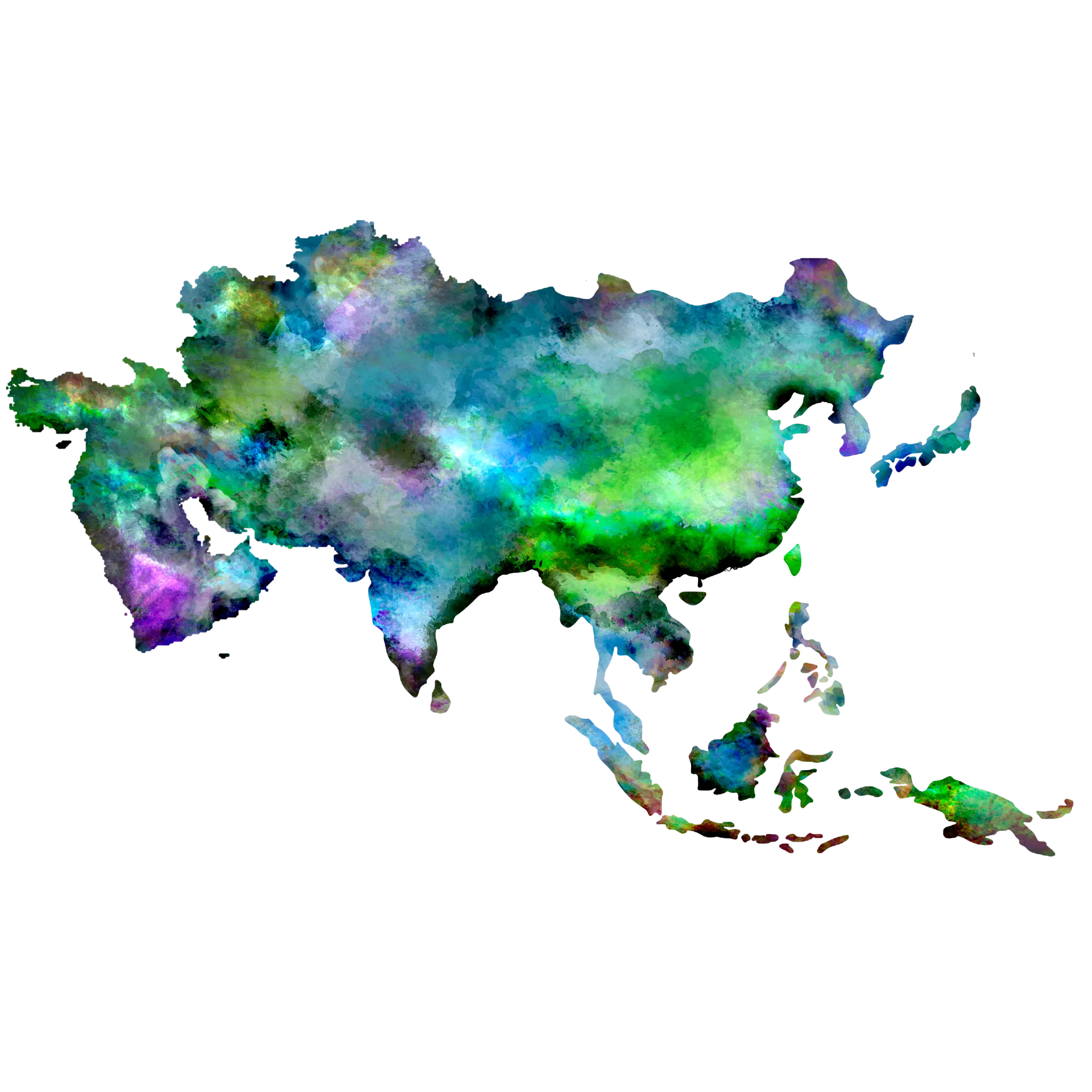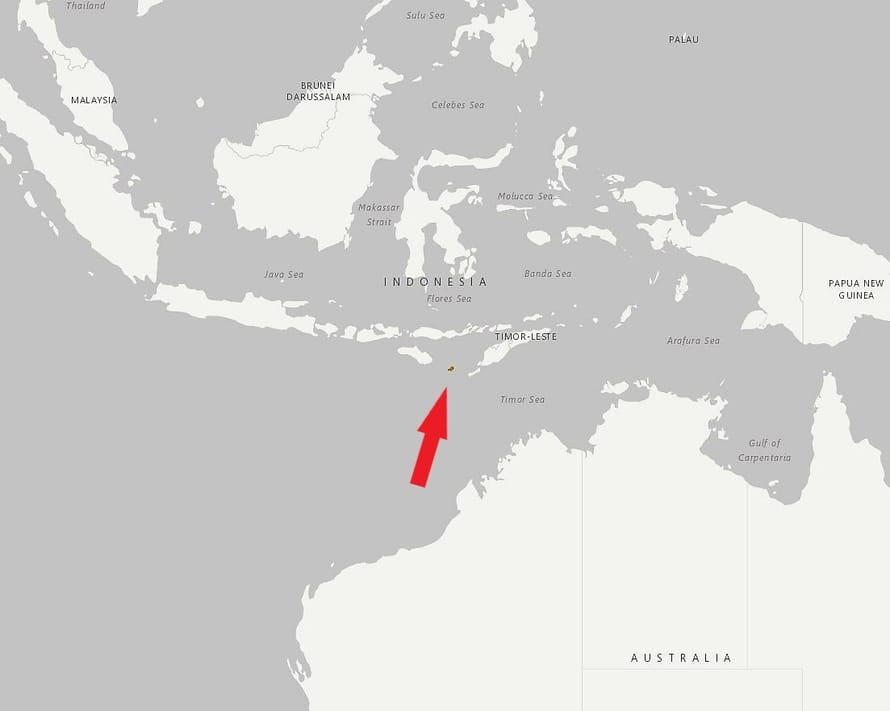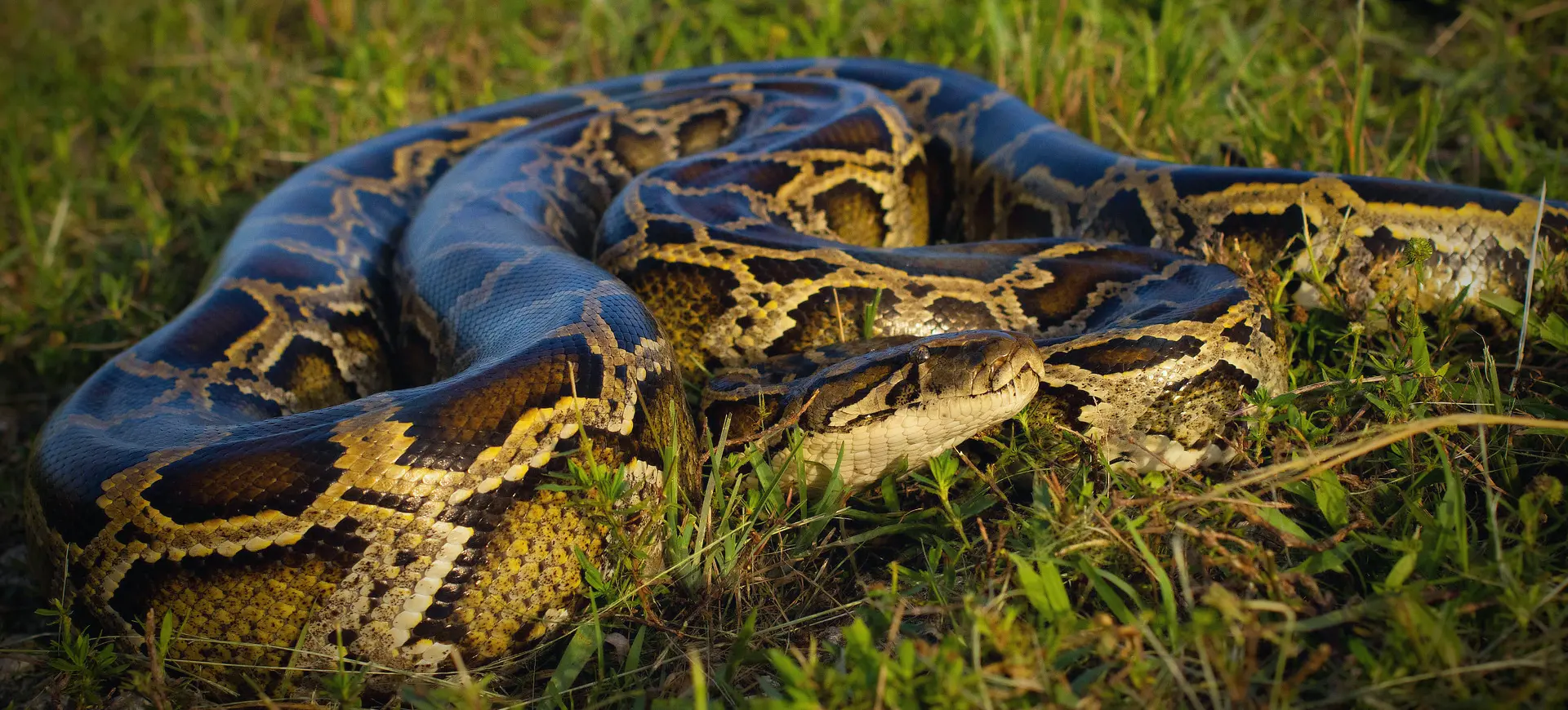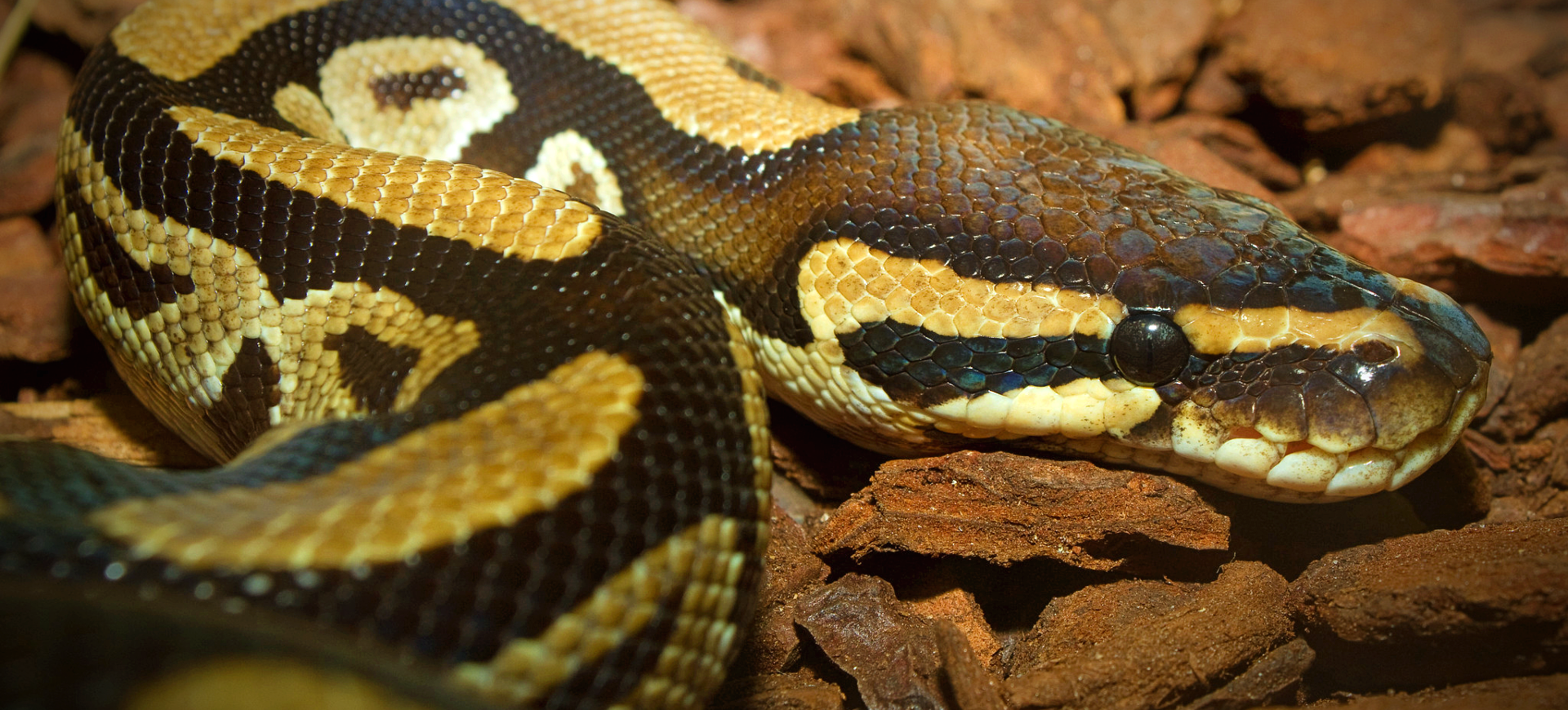Overview
The Savu Island Python, scientifically known as Liasis mackloti savuensis, is a small python species endemic to Savu Island in Indonesia. This python is a subspecies of Macklot’s Python and is distinguished by its relatively modest size and distinctive coloration. Typically, these pythons exhibit a pale, creamy brown base color with darker, irregular blotches along the back, which provides excellent camouflage in their native dry forest habitats. The Savu Island Python is less known compared to other python species but has gained some popularity in the pet trade due to its manageable size and unique appearance.
These pythons are primarily terrestrial and known for their docile nature, making them less aggressive than some other python species. They strongly prefer rocky outcroppings and low vegetation, which serve as cover from predators and as strategic points for ambushing prey. The Savu IslandPython’s diet mainly consists of small mammals and birds, which it subdues using its constrictive strength before consumption. Due to their limited range and specific habitat preferences, they are sensitive to environmental changes and habitat disruption.
The breeding behavior of Savu Island Pythons involves oviposition, where females lay eggs that they subsequently incubate through brooding. Clutch sizes are relatively small, generally consisting of 5 to 10 eggs, reflecting the python’s smaller size. Conservation efforts are crucial for this subspecies due to its limited geographic distribution, the ongoing threats of habitat loss, and the illegal pet trade.
Taxonomy
Kingdom
Phylum
Class
Order
Family
Genus
Species
Sub Species
Type
Current distribution:
The Savu Island Python's distribution is strictly limited to Savu Island, giving it a very narrow geographical range. This limited distribution makes it particularly susceptible to habitat destruction and other environmental pressures. Recent surveys have indicated that while they are still on the island, their numbers are not well documented, and there is concern over the impact of continued habitat degradation and the illegal pet trade.
Conservation measures are essential to ensure the survival of this subspecies in the wild. Efforts include habitat preservation, legal protection, and educating the local population about the importance of this python in their natural ecosystem. Sustainable practices and ecotourism are also encouraged to generate economic benefits from preserving the natural landscapes and fauna of Savu Island.
Physical Description:
The Savu Island Python typically reaches a length of about 4 to 5 feet (1.2 to 1.5 meters), making it one of the smaller python species. This size makes them particularly appealing in the exotic pet market, where larger pythons can be difficult to house. They possess robust and muscular bodies adapted for their constricting method of subduing prey. The skin of this python is smooth with a glossy appearance, and the scales are small and tightly fitted.
Coloration in the Savu Island Python varies from pale to dark brown, interspersed with darker patches that help it blend into the forest floor. The belly is generally lighter, ranging from white to light yellow, contrasting the darker dorsal side sharply. Their eyes are small with vertically slit pupils, adapted for their crepuscular activity patterns. The overall physical structure of these pythons is streamlined for burrowing and navigating through dense underbrush.

Lifespan: Wild: ~20 Years || Captivity: ~25 Years

Weight: Male: 2.5-2.9 lbs (1.2-1.3 kg) || Female: 2.9-3.2 lbs (1.3-1.5 kg)

Length: Male: 3.5-4.5 feet (1.1-1.4 m) || Female: 4-5 feet (1.2-1.5 m)

Top Speed: 2 mph (3.2 km/h)
Characteristic:
Native Habitat:
The Savu Island Python is exclusively found on Savu Island in Indonesia. There, it inhabits dry forest regions interspersed with rocky outcroppings. These habitats provide essential cover and basking spots, crucial for their thermoregulation. The climate is typically dry for most of the year, with a short, intense rainy season, which influences the availability of prey and the timing of breeding activities.
Their habitat preference makes them vulnerable to environmental disturbances such as deforestation and human encroachment. As Savu Island develops economically, pressures on their habitats increase, making conservation efforts critical. The preservation of their natural habitats is important for the pythons and the island’s overall biodiversity.
Climate Zones:
Biomes:
WWF Biomes:
Biogeographical Realms:
Continents:
Countries:
Diet:
Diet & Feeding Habits:
Savu Island Pythons are carnivorous, primarily feeding on small mammals such as rodents and birds found within their native range. They are ambush predators, relying on their cryptic coloration to blend into the surrounding environment before striking at passing prey. The constriction method allows them to subdue larger prey relative to their body size, which is then swallowed whole, a common characteristic among pythons.
In captivity, their diet can be carefully controlled, typically consisting of a regular feeding schedule of rodents, which are either live or pre-killed to prevent injury to the snake. This controlled diet helps maintain their health and mimics their natural feeding habits, which are vital for their physiological well-being. Proper feeding is crucial for maintaining their metabolism, particularly as they are prone to obesity in captivity due to reduced activity levels.
Mating Behavior:
Mating Description:
Mating in Savu Island Pythons occurs annually, typically just before the onset of the rainy season when environmental conditions are most favorable. Males compete for females through a combination of displays and physical confrontations. The larger and more dominant males generally have better success in securing mates. Females then lay eggs several weeks after mating, choosing secluded spots that offer protection from predators and environmental extremes.
Females are oviparous and exhibit maternal care by brooding their eggs, which involves coiling around them to regulate their temperature through muscular contractions. This period of egg brooding lasts about two months, after which the eggs hatch. The hatchlings are entirely independent, receiving no further care from the mother. This reproductive strategy helps maximize the survival rate of the offspring in the wild, where predation rates are high.
Reproduction Season:
Birth Type:
Pregnancy Duration:
Female Name:
Male Name:
Baby Name:
Social Structure Description:
Savu Island Pythons exhibit a predominantly solitary lifestyle, a trait common among many snake species. They tend to come together only during the breeding season when it is necessary to find a mate. For the rest of the year, these pythons prefer a reclusive existence, steering clear of interaction with other pythons, which helps to minimize stress and potential conflicts over territory or resources.
This preference for solitude plays a crucial role in their survival strategy, particularly given the restricted geographic scope of their habitat on Savu Island. By living alone, Savu Island Pythons effectively reduces competition for the limited food resources available, which include various small mammals and birds. Such behavior ensures that the available resources are not overexploited, maintains a balance within their ecosystem, and supports the sustainability of the python population on the island.
Groups:
Conservation Status:
Population Trend:
Detailed population studies of the Savu Island Python are limited, making it difficult to assess their exact numbers in the wild. Anecdotal evidence suggests that their populations may decline due to various anthropogenic factors, including habitat loss and the pressures of the exotic pet trade. This decline is concerning given the pythopython’sted geographic range and specialized habitat needs.
The main threats to the Savu Island Python include habitat destruction caused by agricultural expansion and the increasingly prevalent collection of these snakes for the pet trade. Conservationists are particularly worried about the sustainability of their populations and are calling for comprehensive surveys and monitoring programs. These efforts are crucial to better understand the pythpython’stus and to develop effective strategies to conserve their habitats and manage their populations responsibly.
Population Threats:
The primary threats to the Savu Island Python are largely driven by human activities, specifically habitat destruction due to logging and agricultural expansion. These practices drastically reduce the availability of suitable environments for living and breeding, which are critical for the survival of this species. As their natural habitats shrink, the pythons face increased competition for the remaining resources, which can lead to lower reproduction rates and higher mortality.
In addition to habitat loss, the illegal pet trade significantly impacts the Savu Island Python populations. These pythons are highly valued in the exotic pet market due to their distinctive appearance and relatively small size, making them more manageable for collectors. Furthermore, climate change poses a looming threat by potentially altering the ecological balance of Savu Island, changing weather patterns and habitat conditions that could make survival more challenging for these specialized reptiles.
Conservation Efforts:
Conservation efforts for the Savu Island Python emphasize the crucial need for habitat protection to ensure the survival of this unique subspecies. Establishing legal frameworks and protections is fundamental in controlling these animals’ export and commercial sales, with regulations designed to ensure that any trade activities are sustainable and do not further endanger wild populations. This regulatory approach helps to mitigate the impacts of the illegal pet trade and promotes the preservation of natural habitats.
In addition to regulatory measures, local conservation programs are vital in engaging the community and fostering an understanding of the Savu Island Python’s ecological role. Education initiatives aim to raise awareness about the importance of biodiversity and the specific contributions of the python to the health of its ecosystem. By involving local communities and stakeholders, conservation efforts become more effective and culturally integrated, enhancing the overall impact and support for preserving this python and its environment.
Additional Resources:
Fun Facts
- Savu Island Pythons are known for their ability to change color slightly depending on the temperature, becoming darker in cooler conditions.
- They are one of the few python species where the male is typically larger than the female.
- Despite their popularity in the pet trade, Savu Island Pythons are relatively rare in the wild.
- Their small size compared to other pythons makes them particularly vulnerable to predation by larger animals.
- Savu Island Pythons have a relatively slow metabolism and are adapted to the sparse food availability in their natural habitat.
- They can go for several months without eating, especially during the dry season when prey is scarce.
- The species is named after its native home, Savu Island, a small island with unique ecological characteristics.
- In captivity, they are known for their relatively docile nature, although wild-caught individuals can be more aggressive.
- Conservationists use Savu Island Pythons as a flagship species to promote habitat conservation on Savu Island.
- Their eggs are unusually large in proportion to the female’s body size, which is a unique feature among pythons.







